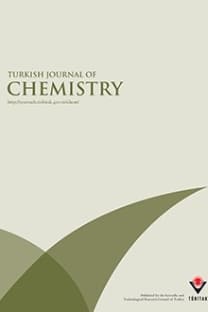Effect of acrylic acid feed contents of microgels on catalytic activity of silver nanoparticles fabricated hybrid microgels
We synthesized poly(N-isopropylacrylamide-co-acrylic acid) microgels with 1, 3, 5, and 7 mol percentage of acrylic acid. Silver nanoparticles were fabricated inside these microgels at room temperature. Pure microgels were characterized by Fourier transform infrared (FTIR) spectroscopy and dynamic light scattering (DLS). Hybrid microgels were characterized by UV-Visible spectroscopy. The size of the silver nanoparticles increased with an increase in the content of acrylic acid. Catalytic activity of these hybrid microgels was investigated using UV-Visible spectrophotometry. Induction time decreased from 8.8 to 2.6 min and the value of apparent rate constant decreased from 0.226 to 0.109 min-1, when the content of acrylic acid was increased from 1 to 7 mol %. This decrease in induction time was due to decrease in the surface area of nanoparticles present within the microgels with an increase in the feed contents of acrylic acid. The decrease in the value of apparent rate constant was due to an increase in the size of nanoparticles fabricated within the microgels with an increase in mol percentage of acrylic acid. The linear relation between apparent rate constant and feed contents of acrylic acid can be used for quantitative analysis of contents of acrylic acid present in polymer microgels.
Effect of acrylic acid feed contents of microgels on catalytic activity of silver nanoparticles fabricated hybrid microgels
We synthesized poly(N-isopropylacrylamide-co-acrylic acid) microgels with 1, 3, 5, and 7 mol percentage of acrylic acid. Silver nanoparticles were fabricated inside these microgels at room temperature. Pure microgels were characterized by Fourier transform infrared (FTIR) spectroscopy and dynamic light scattering (DLS). Hybrid microgels were characterized by UV-Visible spectroscopy. The size of the silver nanoparticles increased with an increase in the content of acrylic acid. Catalytic activity of these hybrid microgels was investigated using UV-Visible spectrophotometry. Induction time decreased from 8.8 to 2.6 min and the value of apparent rate constant decreased from 0.226 to 0.109 min-1, when the content of acrylic acid was increased from 1 to 7 mol %. This decrease in induction time was due to decrease in the surface area of nanoparticles present within the microgels with an increase in the feed contents of acrylic acid. The decrease in the value of apparent rate constant was due to an increase in the size of nanoparticles fabricated within the microgels with an increase in mol percentage of acrylic acid. The linear relation between apparent rate constant and feed contents of acrylic acid can be used for quantitative analysis of contents of acrylic acid present in polymer microgels.
___
- Characterization
- An RX I FTIR spectrometer (PerkinElmer) was used to obtain FTIR spectra in the near infrared range of 4000– 650 cm −1
- A 90Plus particle size analyzer (Brookhaven, USA) equipped with a solid-state laser (wavelength = 659 nm) and a power of 15 mW was used to measure the size of particles at an angle of 90◦in aqueous solution. A UVD 3500 (Labomed Inc.), was used for UV-Visible studies.
